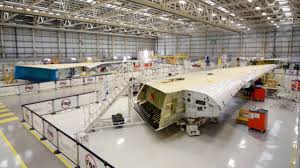
Breaking News
 This roof paint blocks 97% of sunlight and pulls water from the air
This roof paint blocks 97% of sunlight and pulls water from the air
 'Venomous' Republican split over Israel hits new low as fiery feud reaches White House
'Venomous' Republican split over Israel hits new low as fiery feud reaches White House
 Disease-ridden monkey that escaped from research facility shot dead by vigilante mom protecting...
Disease-ridden monkey that escaped from research facility shot dead by vigilante mom protecting...
 Hooters returns - founders say survival hinges on uniform change after buying chain...
Hooters returns - founders say survival hinges on uniform change after buying chain...
Top Tech News
 The 6 Best LLM Tools To Run Models Locally
The 6 Best LLM Tools To Run Models Locally
 Testing My First Sodium-Ion Solar Battery
Testing My First Sodium-Ion Solar Battery
 A man once paralyzed from the waist down now stands on his own, not with machines or wires,...
A man once paralyzed from the waist down now stands on his own, not with machines or wires,...
 Review: Thumb-sized thermal camera turns your phone into a smart tool
Review: Thumb-sized thermal camera turns your phone into a smart tool
 Army To Bring Nuclear Microreactors To Its Bases By 2028
Army To Bring Nuclear Microreactors To Its Bases By 2028
 Nissan Says It's On Track For Solid-State Batteries That Double EV Range By 2028
Nissan Says It's On Track For Solid-State Batteries That Double EV Range By 2028
 Carbon based computers that run on iron
Carbon based computers that run on iron
 100% Free AC & Heat from SOLAR! Airspool Mini Split AC from Santan Solar | Unboxing & Install
100% Free AC & Heat from SOLAR! Airspool Mini Split AC from Santan Solar | Unboxing & Install
 Engineers Discovered the Spectacular Secret to Making 17x Stronger Cement
Engineers Discovered the Spectacular Secret to Making 17x Stronger Cement
Airbus is making planes lighter with technology we barely understand

The Airbus A320 is a hefty machine. Weighing in at 183,000 pounds fully loaded, the plane needs to be strong enough to withstand the constant forces of wind but light enough to be economical to operate. Every pound costs fuel: Your carry-on laptop actually costs an airline an extra 33 cents in gas, for instance, and a magazine costs a nickel.
The advances brought by decades of aeronautical engineering have more or less plateaued, which is why Airbus has partnered with the design and engineering software company Autodesk to design planes of the future in a new way. The two companies are using a tool called generative design—basically, programming software with all sorts of physical parameters and commanding it to develop a design around those rules. Generative design can do anything from shape a superstrong yet minimal chair to calculate wildly complex weight-to-strength ratios in airplane parts that a human brain couldn't consider.
So far, Airbus has used generative design to develop a 3D-printed "bionic partition" for airplane cabins that's 45% lighter yet 8% stronger than anything it's used to date. But the company is pushing further. It's now applying generative design tools to reengineer many more parts of its planes, from the vertical stabilizer (that tall fin that's on the back of a jet—now 20% lighter than ever before), to the legs of its seats, to the interior layout of the cabin, to how its factories are built for optimal production and cost-effectiveness.

 'Venomous' Republican split over Israel hits new low as fiery feud reaches White House'Venomous' Republican split over Israel hits new low as fiery feud reaches White House
'Venomous' Republican split over Israel hits new low as fiery feud reaches White House'Venomous' Republican split over Israel hits new low as fiery feud reaches White House

